Add some delicious, unusual fruit crops, fruiting shrubs, and old-time fruit trees to your yard and garden—bush sour cherries, lingonberries, quince, persimmon, paw paws, and more! Winter is a good time to assess your landscape and see what spaces you would like to fill with fruit. Frankly, we want to plant them all—and wish we had enough room!
Wonderful, Luscious Fruit For the Garden
Add some new and fun fruits to your edible landscape! Take a look at some of these fruiting shrubs, vines, and ground covers!
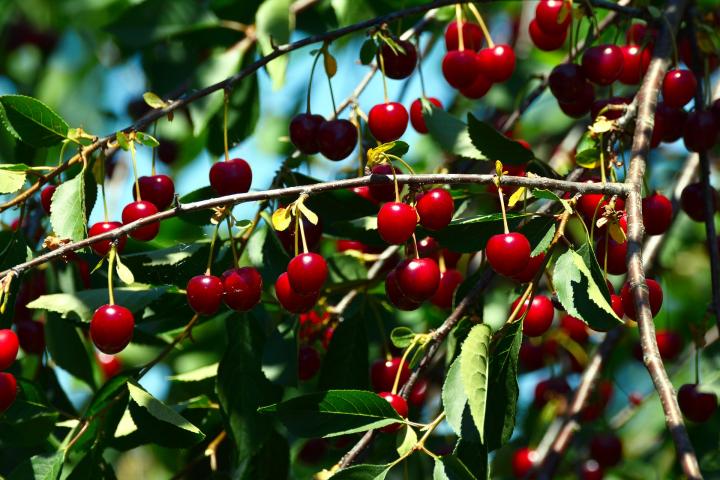
Bush sour cherries will be a welcome addition to your edible landscape.
- Bush sour cherries developed years ago by Elwyn Meader of UNH are experiencing a resurgence in popularity as a new generation of backyard gardeners discovers them. The tart red fruits are good for pies or jam. The plants grow to be about 4 feet tall and wide making the fruit easy to pick. The pink flowers blossom in early summer avoiding damage from late frosts and the fruits ripen from August thru September. Hardy in zones 3-8, plant 2 different varieties for better fruiting. Look for 'Joel', 'Jan', and 'Joy'. If you can't find the Meader series look for slightly larger dwarf sour cherries like self-pollinating 'Carmine Jewel', 'Romeo' or 'Juliet'. Developed in Canada, they grow 5-8 feet tall, are hardy in zone 3-8 and bear slightly larger, sweeter fruit. See the Almanac's Cherry Growing Guide.
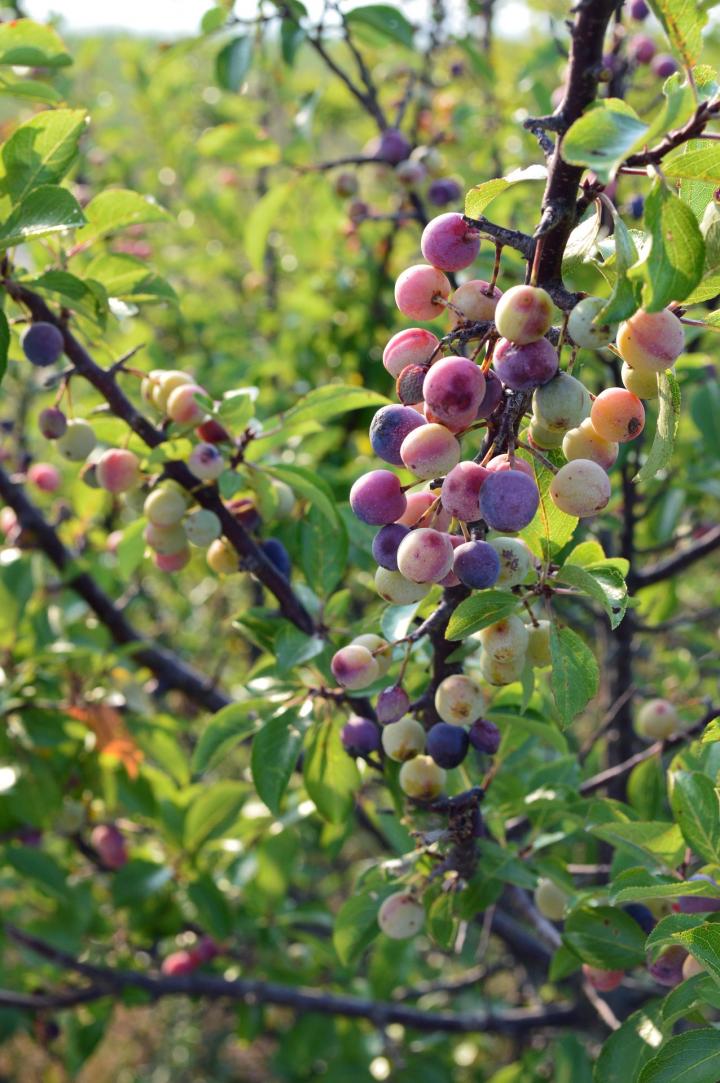
Beach plums make the tastiest jam.
- Beach plums are great for growing in poor sandy soil and since they grow wild in the dunes along the seashore they can withstand salty conditions. If given a location with good garden soil, they will produce even better. Multi-stemmed shrubs, they send out suckers and can be trained to form a hedge. Growing 6 feet tall and wide, the dense bushes have showy white blooms in spring and the grape-sized, purple-red fruits ripen in September. The flavor varies from sweet to tart and they can be eaten fresh but beach plum jam is a treat not to be missed! Hardy in zones 3-8. See the Almanac's Plum Growing Guides.

Japanese haskaps, photo courtesy of Proven Winners
- Honeyberry, otherwise known as haskap, looks like an elongated blueberry and tastes like a cross between a blueberry and a raspberry. In the honeysuckle family, they have yellow flowers very early in the spring and produce fruit in early summer, usually before the strawberries are ripe. Native to northern regions of Eurasia, they grow about 5 feet tall and wide and are hardy in zones 3-9. Plant them in rich moist soil where they get full sun to part shade. For best fruiting you'll need to plant 2 different varieties.

Cluster of aronia berries
- Aronia berry bushes also grow to be about 3-6 feet tall and wide. They have white flowers in spring and the dark green foliage turns deep red in fall, making it a handsome plant as well as fruitful. It bears clusters of glossy, dark purple berries that ripen in late July thru August. The berries have a strong tart taste - as evidenced by their common name of black chokeberry - so they are not for eating fresh. You'll need to add lots of sweetener and turn them into wine, jelly, jam or juice. Considered a superfruit, they are full of antioxidants, vitamins, and minerals, and have the highest phytonutrient content of any fruit. Native to the eastern US and hardy in zones 3-9, they are self-fruitful so you only need to plant one. They are easy to grow in full sun or part shade, are not fussy about the soil, and usually have no disease or insect problems.
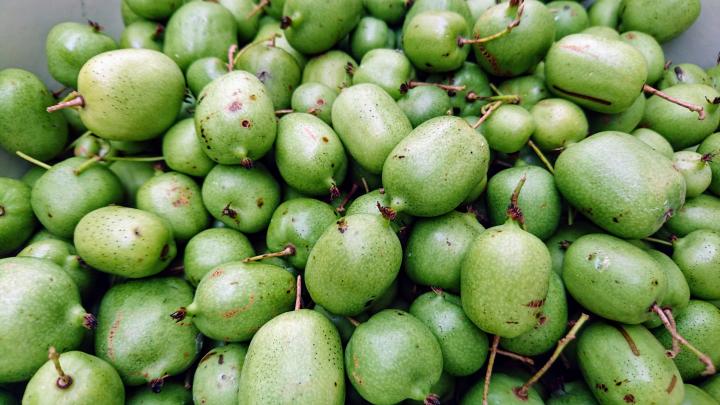
Hardy kiwiberries lack the fuzz of their larger cousins.
- Kiwiberries are smaller than the fuzzy kiwis we get at the grocery store. Also called hardy kiwis (Actinidia arguta), they are about the size of a large grape, have smooth edible skin, and are considered a superfood for their high vitamin and mineral content. To get fruit you will need one male plant to pollinate every 3 female plants. UNH has done a lot of work developing these plants for commercial and home gardeners. For the best flavor they recommend the red-blushed varieties like 'Rossana', 'Geneva 3', and 'Hardy Red'. The vines are aggressive growers, reaching 20 feet or more and will need to be pruned and trained to a sturdy support. Fruits ripen from mid-September to mid-October and store well in the fridge for up to 6 weeks.
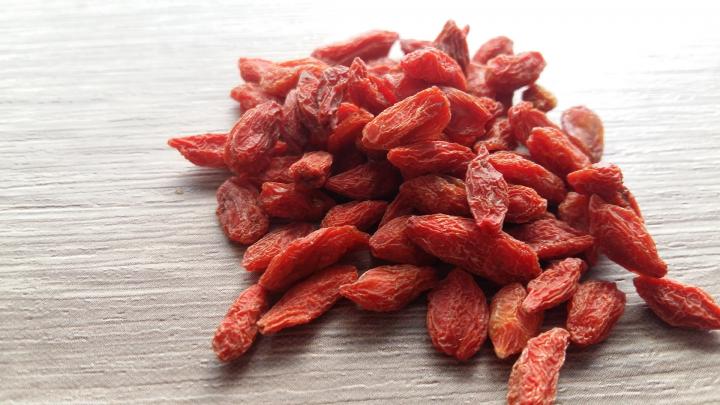
Goji are delicious dried.
- Goji berries grow on a 10 foot long vine that can be pruned into a 4-6 foot tall shrub if preferred. The nutritious berries can be eaten fresh, juiced, or dried. They are high in protein and antioxidants including carotene. The plants are self-fruitful, drought resistant, and hardy in zones 5--9. Plant in neutral to sweet soil where they get half to full day sun.
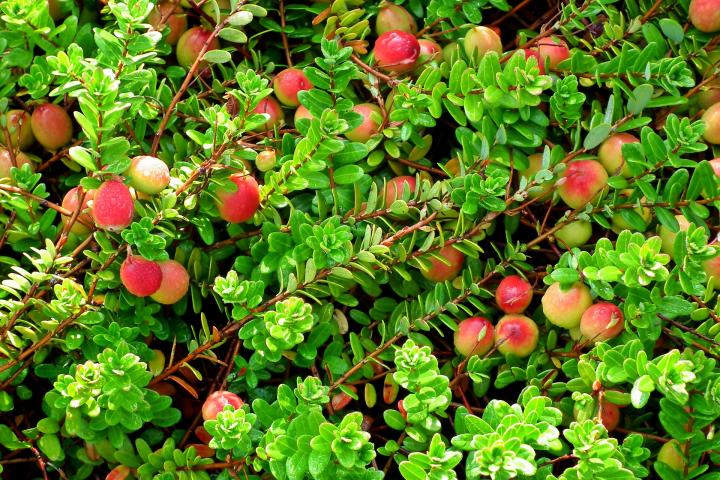
Cranberries make a fruitful groundcover.
- Cranberries don't need a bog to grow, just moist acidic soil with lots of organic matter. They are low-growing, about 6 inches high and when planted 2 feet apart will form a dense, evergreen, ground covering mat. Native to the US and Canada, most varieties are self-fertile and are hardy in zones 2-8. Wouldn't it be cool to pick your own for cranberry sauce?

Lingonberries are in the same family as blueberries and cranberries and like the same acid soil conditions.
- Lingonberries have long been popular in Scandinavia where they are made into every thing from sauce and syrup to jam and wine. They have white bell-shaped flowers in spring and some varieties give you 2 crops of berries, one in late summer and another in fall. Tart until fully ripe, the red lingonberry is sweeter than its cousin the cranberry. They grow best in full sun and poor sandy acidic soil. Depending on the variety they can grow between 5 and 18 inches tall. Pick low growing ones if you want a semi-evergreen groundcover. Even though they are shallowly rooted they are extremely tough little plants and are cold hardy to zone 2. Plant more than one variety for better production.
Forgotten Fruit Trees
If you are interested in growing some different types of fruit trees, take a look at these old time favorites. Many were quite popular up to the 1950s when it became easier to buy fruit at the grocery store. Many of the fruits that were hard to ship or had a short shelf life never made it to the supermarket and were forgotten by shoppers in favor of apples, pears, peaches, and plums. They may have slipped off the radar but backyard fruit growers are giving them a second look.
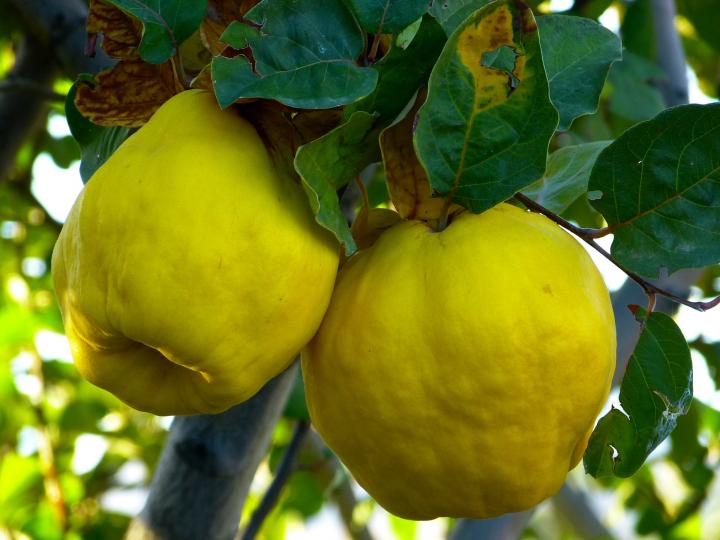
Quince pie is a special treat!
- Quince (Cydonia oblonga) is not the same as the ornamental quince that you may be growing in your yard. This quince is a small tree, growing about 10 feet tall but it does send out a lot of suckers and can be pruned to make a thick hedge. The aromatic yellow fruits are large and look like a cross between a pear and an apple but have a lemony-pineapple flavor. Some varieties can be eaten out of hand or with a spoon when ripe while others are more astringent and are best made into quince jelly. They have large white blossoms in spring and the fruits ripen in late fall. An Asian native they are self-fertile, disease resistant and hardy in zones 4-8.
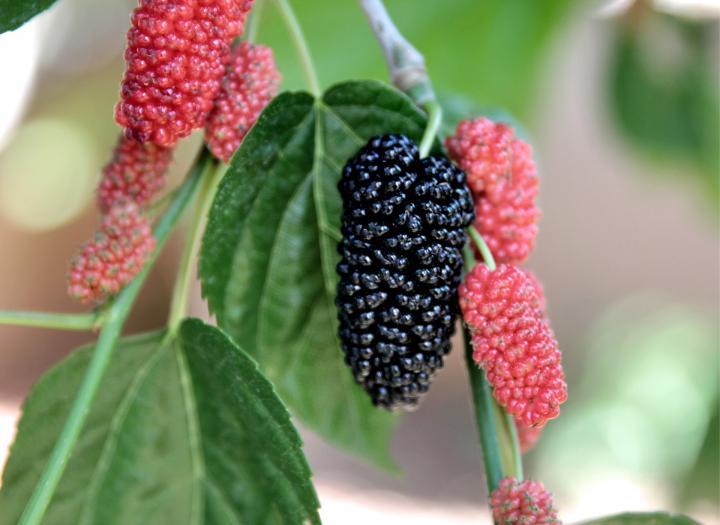
Be prepared to share some of your mulberries with the birds.
- Mulberries look like long blackberries, growing up to 2 1/2 inches long or more but are even sweeter than raspberries. The red mulberry tree (Morus rubra) is native to the eastern US and can top out at about 30 feet tall. If that is too big for you there are 6-8 foot tall dwarf trees or you could grow an attractive dwarf weeping mulberry as a focal point in your yard. It gets to be about 12 feet tall but bears smaller berries. All mulberries are fast growers and will fruit in full sun to part shade. They like moist, well-drained soil and are hardy in zones 4-8. You'll only need one since they are self-fertile producing both male and female small green catkins instead of showy blossoms. They leaf out late in the spring but bear fruit early which starts to ripen in mid-July thru Sept. The berries don't all mature at the same time and will drop as they ripen. Some people lay a sheet under the tree to catch them as they fall. The black berries can be messy and they attract birds who are also messy so it is a good tree to plant away from cars, walkways, and patios. Mulberries are delicious eaten fresh or made into pies, sauces, jams, and wine and are considered a superfruit, high in antioxidants.
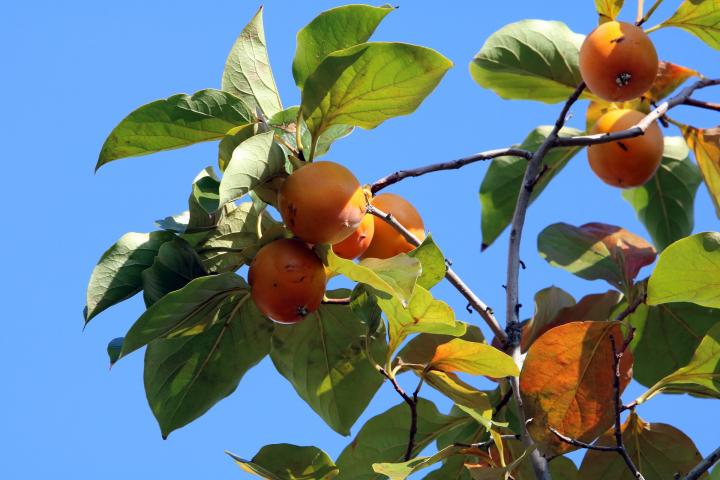
American persimmons are much smaller than Asian persimmons but easier to grow.
- American persimmon (Diospyrus virginiana) 'Meader' is a self-fertile, seedless persimmon developed at UNH. It will grow to be 30 feet tall but can be pruned to a more manageable size. The orange fruits are about 1 1/2 - 3 inches across, much smaller than Asian persimmons, and have a sweet butterscotch or caramel flavor. They ripen after frost from Sept. - Nov. and hang on the trees long after the leaves have fallen. Pick when soft to the touch for the best flavor. The trees are attractive in fall when the leaves turn bright crimson. They are hardy in zones 4-8. Ever heard the folklore about predicting winter weather with a persimmon seed? Check this out.
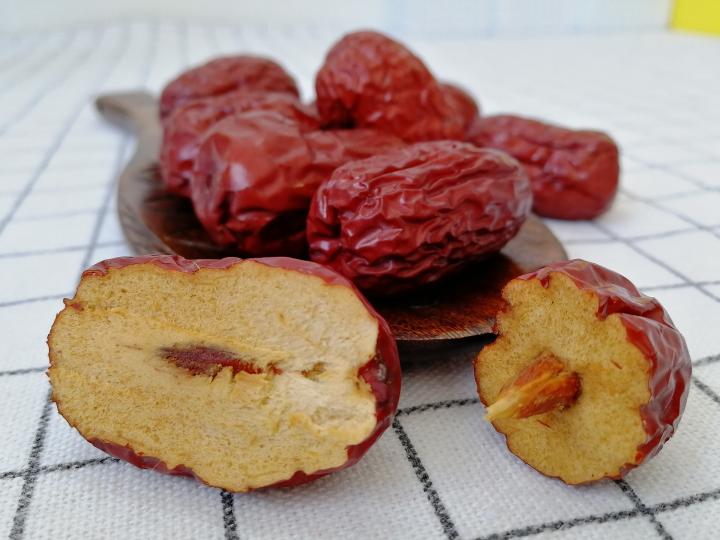
Fresh jujubes are nothing like the candies we used to eat in the movie theater!
- Jubjubes (Zizyphus jujube) are native to South Asia and most varieties are best grown in zones 6-9 but there are a few that are cold hardy to zone 5. Also called red date the fruits are dark purple or red when ripe and wrinkly, nothing like the jujubes we enjoyed in the movie theater! They can be picked when yellow and the fruit will be crisp and firm like an apple but after a few days they will get wrinkly. The fruits are rich in antioxidants, low in calories, and high in vitamin C and fiber. They are thought to improve sleep and reduce anxiety. Most varieties are 15-20 feet tall but if your space is limited, 'Shaxi Li' only gets 8-10 feet tall by 10-12 feet wide. Jujubes like it hot, sunny, and dry and do especially well in southwestern states like New Mexico and Texas. They produce small greenish-yellow flowers from June-July and the fruits mature from late Aug - Oct. The trees are self-fruitful but yields will increase if 2 different varieties are planted for cross-pollination. Once established they are long lived and will produce fruit for years. There is a 1,000 year old tree in China that still has fruit each year!

Medlar is an old-time fruit that is impossible to ship and has to be eaten as soon as it is soft.
- Medlar (Mespilus germanica) is in the rose family and has 1-2 inch fruits that look like large rosehips. The 10 foot tall trees have large white blossoms blushed with pink in May-June and they are self-fertile. There is a trick to eating them; they have to be fully ripe to the point of mush. You can leave them on the tree until they are soft or pick them after the first frost and let them sit in a cool place to continue to mature in a process called "bletting". When soft they taste like cinnamon applesauce and have about the same texture. Easy to grow, they are hardy in zones 4-9.
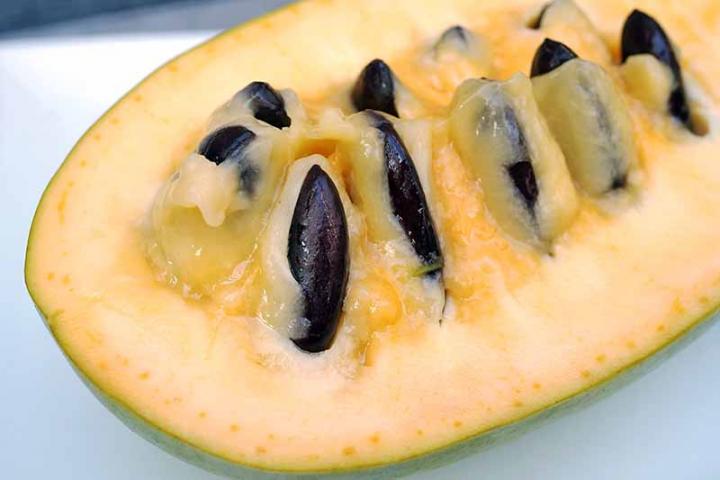
Some people are allergic to pawpaws so do a taste test before you go all in.
- Pawpaw (Asmina triloba) is a North American native that grows wild in 26 states so it is probably well known to a lot of you. In fact many states hold an annual pawpaw festival each fall. If you haven't tasted this fruit, also known as Indiana banana, hillbilly mango, or American custard apple, after you have tried it you'll want to grow it. Hardy in zones 4-9 it grows as a small tree 10-25 feet tall. The 3-6 inch oblong fruits are the largest North American native fruit and have a tropical flavor. Depending on the variety it can taste like banana pudding, vanilla custard, mango, or pineapple. Freeze the flesh to make an awesome sorbet. Unless you find seed-grown plants most named varieties are grafted and you will need to grow two genetically different ones to set a good crop. The dark purplish-brown, bell-shaped flowers bloom before the leaves emerge in early spring. They are not attractive to bees but instead are pollinated by flies and beetles so they smell faintly like rotting meat to attract them. They will grow in shade but need a good amount of sun and a long hot summer to ripen the fruit before frost.
For a taste of the exotic and unusual, try growing some of these fruits that you will never find in the grocery store.
























